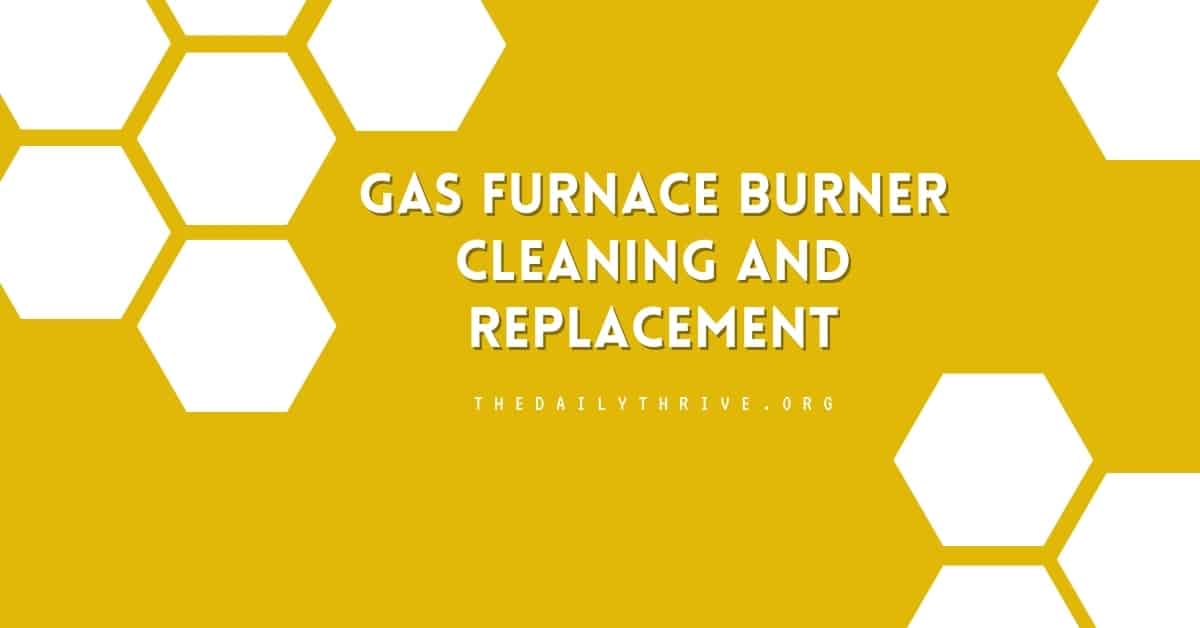As winter approaches, many homeowners are preparing their homes for the colder months ahead. This preparation is key to ensuring their heating system is in good working order. One of the most important components of a gas furnace is the burner. A dirty or faulty burner can reduce efficiency, energy bills, and safety hazards. In this post, we’ll explore the common issues that can arise and how to clean or replace them as necessary.
What Is a Furnace Burner?
A furnace burner is a gas furnace component responsible for producing the heat that warms your home. It works by mixing gas with air and igniting the mixture to create a flame. The flame then heats the air, circulating through your home via ductwork.
Common Furnace Burner Issues
While furnace burners are generally reliable, they can experience a variety of issues over time. Here are some of the most common issues that can arise:
- Cracks
Over time, furnace burners can develop cracks due to the constant expansion and contraction that occurs as they heat up and cool down. These cracks can allow gas to escape, which can be a safety hazard.
- Rust
Rust can develop on furnace burners, especially in humid environments. Rust can cause the burner to deteriorate over time, which can lead to a host of issues.
- Blockages
Blockages in furnace burners can be caused by various factors, including dust, debris, or even spider webs. These blockages can impede the flow of gas and air, which can cause the burner to malfunction.
- Insufficient Heat
If your furnace burner isn’t producing enough heat, it could be due to various issues. It’s possible that the burner is dirty or clogged or that there is an issue with the gas supply or ignition system.
Symptoms of Dirty Furnace Burners
Dirty furnace burners can cause a range of issues in your home. Here are some of the most common symptoms of dirty furnace burners:
- Reduced heating efficiency
- Higher energy bills
- Uneven heating throughout your home
- Strange noises are coming from your furnace
- The smell of gas near your furnace
Signs Your Furnace Burners Might Be Faulty
In addition to dirty burners, there are several other signs that your furnace burners might be faulty. Here are some of the most common signs to look out for:
- Yellow flames instead of blue flames
- Soot buildup on the burner or other furnace components
- Visible cracks or rust on the burner
- Burner flames that sputter or flicker
- A burning smell coming from your furnace
How to Clean Gas Furnace Burners
Cleaning your gas furnace burners is an important part of furnace maintenance. Here’s how to do it:
- Turn off the power to your furnace. You can do this by turning off your furnace’s switch or flipping the breaker switch.
- Locate the burner assembly. It’s usually located in the bottom of your furnace and will be covered by a metal plate.
- Remove the metal plate to access the burner assembly.
- Use a vacuum with a hose attachment to remove any dust, debris, or cobwebs from the burner assembly.
- Use a soft-bristled brush to gently clean the burner itself. Be careful not to damage the burner or dislodge any components.
- Inspect the burner for any signs of damage, such as cracks or rust. If you notice any damage, it’s best to have the burner replaced.
- Once you’ve cleaned the burner, replace the metal plate and turn the power back on to your furnace.
How Often Do Furnace Burners Need to be Cleaned?
How often you need to clean your furnace burners will depend on a variety of factors, including how often you use your furnace and the conditions in your home. However, as a general rule, cleaning your furnace burners at least once a year is a good idea. This can help ensure that your furnace is operating at maximum efficiency and can also help prevent more serious issues from developing.
How to Replace Gas Furnace Burners
If your furnace burners are damaged or faulty, it may be necessary to replace them. Here’s how to do it:
It's important to note that furnace burners are a critical component of your heating system and should only be replaced by a qualified professional. Attempting to replace your furnace burners on your own can be dangerous and damage your furnace.
- Turn off the power to your furnace.
- Locate the burner assembly and remove the metal plate covering it.
- Disconnect the gas line from the burner assembly. This will usually involve loosening a fitting with a wrench.
- Remove any screws or bolts that are holding the burner assembly in place.
- Gently lift the burner assembly out of the furnace.
- Install the new burner assembly, making sure it is securely in place.
- Reconnect the gas line and tighten the fitting with a wrench.
- Replace the metal plate covering the burner assembly.
- Turn the power back on to your furnace and test the new burner to ensure it works properly.
Furnace burners are crucial in keeping your home warm and comfortable during winter. By understanding the common issues and how to clean or replace them as necessary, you can help ensure that your furnace operates at maximum efficiency and safety. If you’re unsure how to clean or replace your furnace burners, it’s always best to consult a professional HVAC technician.






